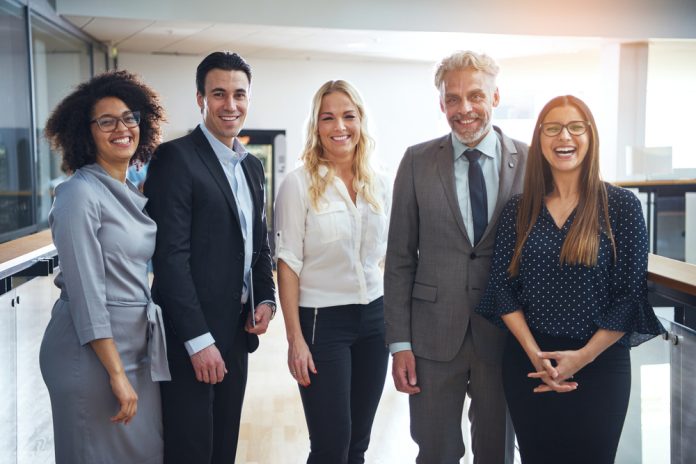
When companies think of diversity, equity, and inclusion (DEI), many often consider it through the lens of race and gender. With this, age diversity often gets left behind. Only 8 percent of organizations, according to a PWC report, include age as part of their diversity and inclusion strategy.
Ageism continues to be an unfortunate feature of many workplaces. And age discrimination often starts in the hiring process. In job descriptions, subtle phrases such as “cultural fit,” “digital native,” and “energetic person” often are designed to deter older workers from applying in the first place.
But a lack of age diversity hurts companies more than benefits them. Here’s why.
The Importance of Age Diversity
In a technology-centric world where things are constantly changing, there’s often a bias toward hiring younger workers who grew up with the apps, programs, and tools constantly surrounding us. Companies view them as more adaptable and open to new ideas and practices. On the other hand, older workers are perceived to be less agile and “less willing to roll up their sleeves and do something new,” according to an article published in Harvard Business Review.
But older workers bring benefits that companies often overlook—wisdom and experience, in particular. According to National Bureau of Economic Research, those over age 40 are three times more likely to start successful companies than their younger cohorts. The attributes that make them great entrepreneurs also can make them great employees and managers.
Companies with diverse teams are likelier to deliver higher financial returns than their non-diverse counterparts. In addition, a Journal of Applied Psychology study showed that being a part of a mixed-aged workplace group increased motivation for older and younger colleagues and their intent to stay with the organization.
Facilitating Successful Collaboration Across Age Groups
To reap the benefits of multi-generational workers, companies need to do more than hire people of all ages. First, they need to actively challenge the stereotype associated with various generations. For a team to be successful and collaborative, each member must feel like they can authentically be themselves. That’s unlikely to happen if younger employees view older workers as “collaborative but averse to change” or older workers see younger employees as “progressive but disloyal.”
Next, companies should create opportunities that encourage (and normalize) interactions between workers of different ages. Whether that is employee resource groups, learning workshops, or internal networking events, facilitating opportunities for workers of all ages to build relationships allows them to learn about each other’s experiences, working styles, and preferred methods of communication.
It’s also crucial for companies to create a space where everyone feels comfortable sharing their thoughts in meetings and discussions. Both younger and older workers bring different perspectives and life experiences, and combining those perspectives will encourage innovation in a company.
Using Mentoring to Improve Age Diversity
Mentoring can go a long way in helping companies retain older workers while ensuring that workers of all ages feel included and have a sense of belonging. Here are several mentoring formats that help companies do just that.
-
Reverse mentoring
In a traditional formal mentor/mentee relationship, the mentor is typically an older employee with many years of experience. The mentee is usually a younger employee just starting out in their career.
Reverse mentoring flips that dynamic, and both parties can benefit from this arrangement. Together, they can learn about new technological tools that help the company while incorporating traditional methods that have worked for them for many years. While older workers can share their experience and wisdom, younger workers can provide fresh perspectives and new ideas. This format also can invite better interaction and social connectivity between genders, ethnicities, and age groups to build inclusion across generational lines, beliefs, and norms.
Reverse mentoring also allows older workers to identify younger workers with leadership potential and aspirations. When younger workers see an opportunity to grow within the company, they’re likelier to remain loyal.
-
Flash mentoring
Another option is flash mentoring, where the mentee learns a skill or more about a particular topic from a subject matter expert on a one-time (or as-needed) basis. This is a great format for those who want to be mentors but are not in a position to make a long-term commitment. It’s also an excellent way for employees of all ages to gain additional skills and build their professional network. Employees who have access to ongoing learning opportunities and develop authentic relationships are more likely to be engaged with their work and the company.
-
Career mentoring
Lastly, traditional one-to-one mentorship programs can go a long way in improving age diversity and inclusion. No matter what age or career stage, employees can benefit from having someone to strategize their career with and guide their professional development and help them with their career pathing. Mentoring can ensure that employees take on roles that align with their skills, experience, and interests as they progress through the organization. When this kind of alignment is present, employees get a sense of purpose in their work and, in turn, are more likely to be loyal to the company.
Age diversity often has been an overlooked aspect of an organization’s DEI strategy, and companies are missing out. But by including age in their DEI policies and initiatives, companies can reap the many benefits a collaborative, multi-generational workforce can bring.



